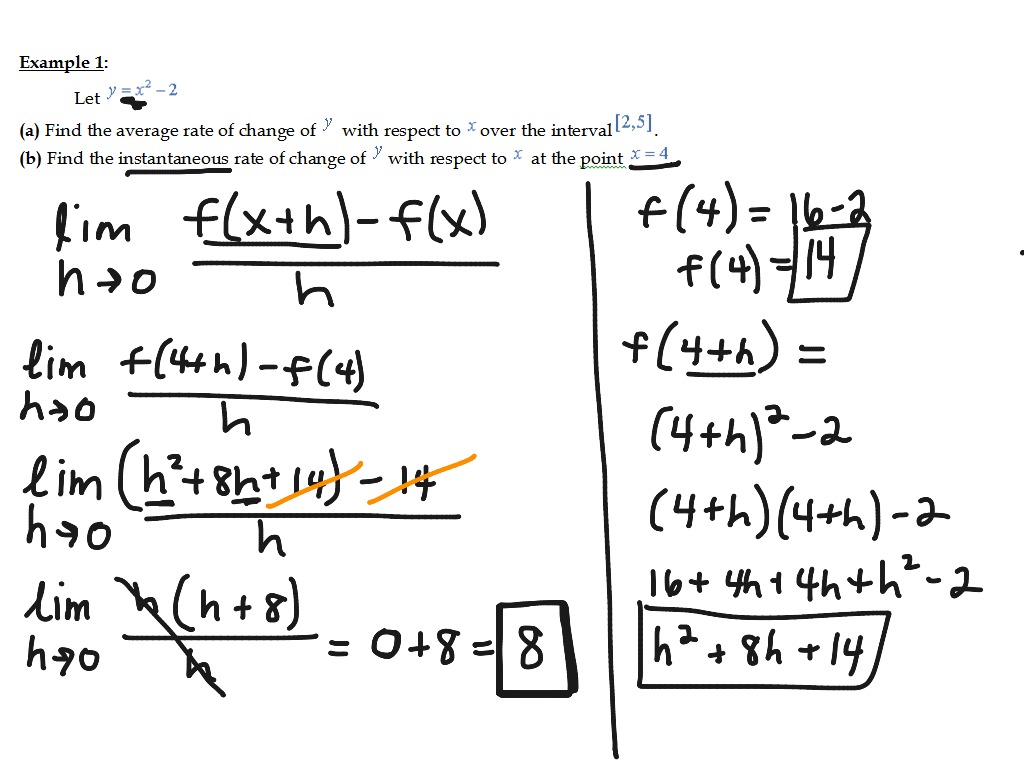Instantaneous Rate Of Change Formula Calculus
The derivative of a function describes the function s instantaneous rate of change at a certain point Another common interpretation is that the derivative gives us the slope of the line tangent to the function s graph at that point Learn how we define the derivative using limits Learn about a bunch of very useful rules like the power product and quotient rules that help us find When the instantaneous rate of change of a function at a given point is negative, it simply means that the function is decreasing at that point. As an example, given a function of the form y=mx+b, when m is positive, the function is increasing, but when m is negative, the function is decreasing.

As we already know the instantaneous rate of change of f x at a is its derivative f a lim h 0f a h f a h For small enough values of h f a f a h f a h We can then solve for f a h to get the amount of change formula f a h f a f a h 3 10 Average and Instantaneous Rate of Change of a function over an interval & a point - Calculus - YouTube 0:00 / 48:09 This calculus video tutorial shows you how to calculate the average...

Instantaneous Rate Of Change Formula Calculus
This calculus video tutorial provides a basic introduction into the instantaneous rate of change of functions as well as the average rate of change The average rate of change is equal Calculating instantaneous rates of change mr mathematics. Week 18 video 2 average and instantaneous rates of changeHow limits are used in calculus finding a function s instantaneous.

Calculus Find The Instantaneous Rate Of Change At X 1

ShowMe Calculating Average Rates Of Change
One of the two primary concepts of calculus involves calculating the rate of change of one quantity with respect to another For example speed is defined as the rate of displacement with respect to time h t 9 8t Using the instantaneous rate of change formula from above 9 8 35s 343m sec Example 7 The instantaneous rate of change of a function is given by the function's derivative. V 2 ′ ( t) = 0.2 t For example, V 2 ′ ( 5) = 1 . Mathematically, this means that the slope of the line tangent to the graph of V 2 when x = 5 is 1 . What does this mean in the context of our water tank?
2 Instantaneous Rate of Change The Derivative Suppose that y is a function of x say y f x It is often necessary to know how sensitive the value of y is to small changes in x We started the last section by saying It is often necessary to know how sensitive the value of y is to small changes in x The general form of an equation in point-slope form is y - y1 = m (x - x1) where m is the slope and (x1,y1) is the point. Our point is (7,109.45) and the slope is the average slope between [6.5,7.5] which is 1.9. Plug these into the equation and you get an approximation of the equation of a tangent line at (7,109.45).